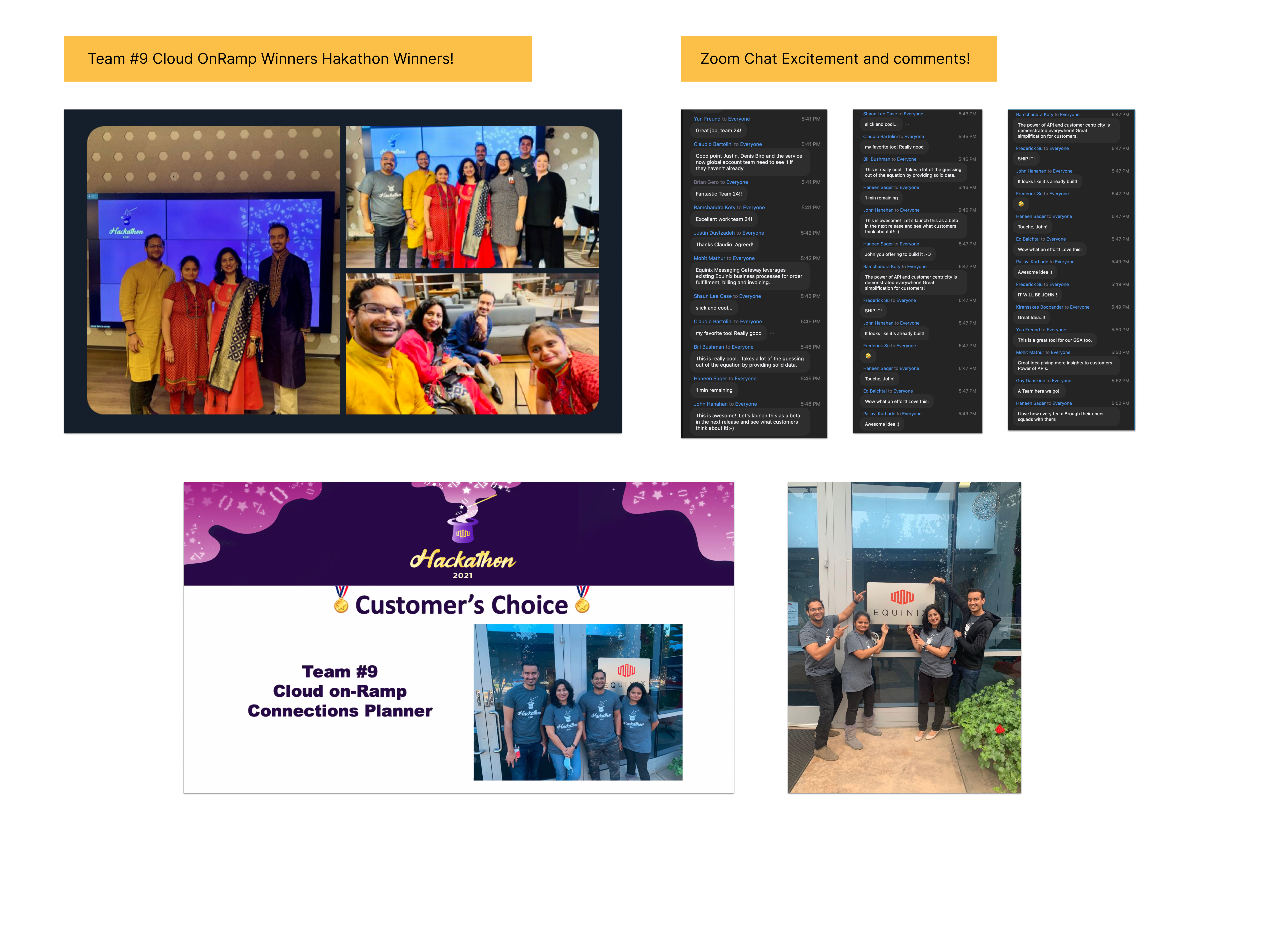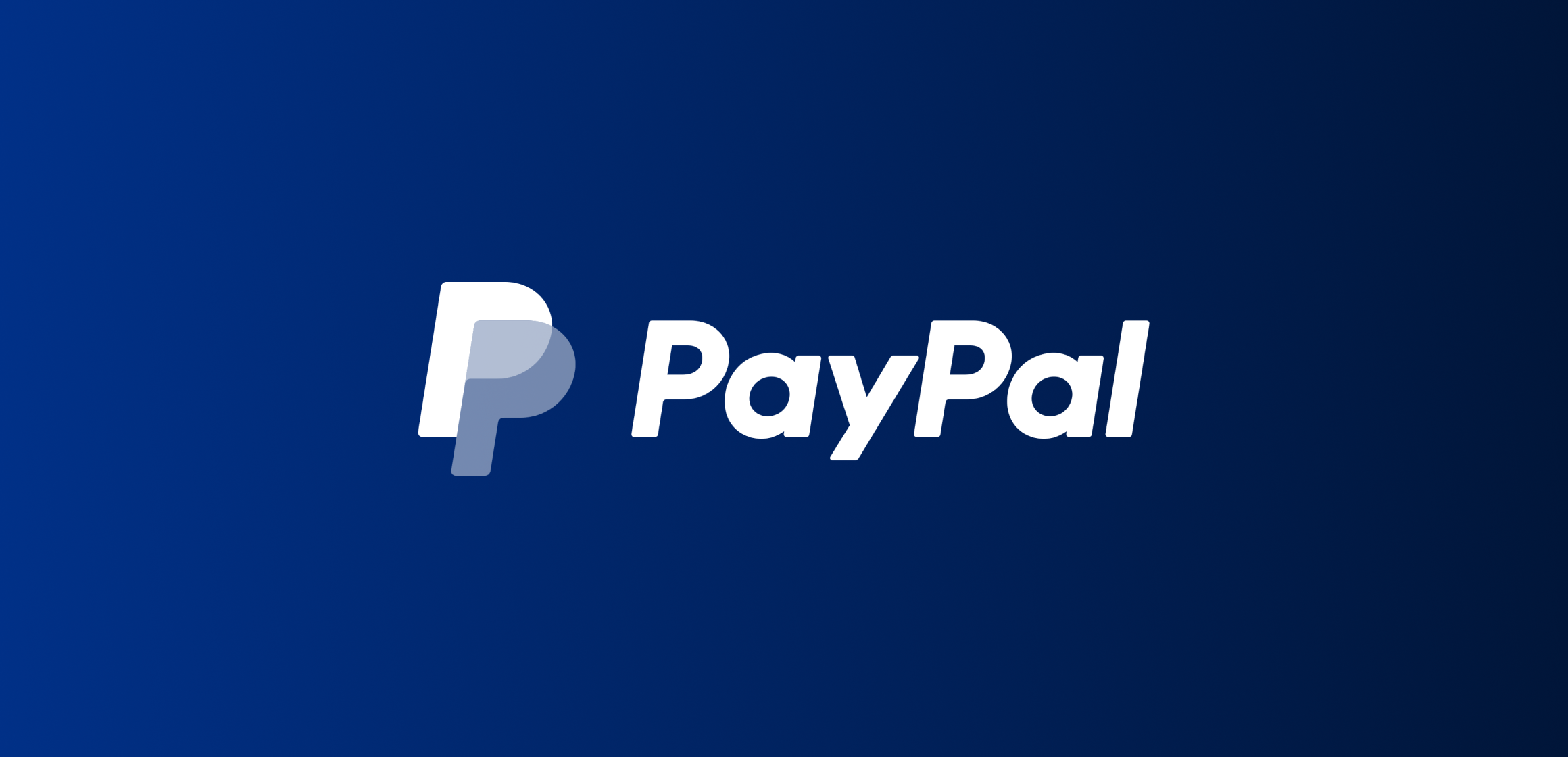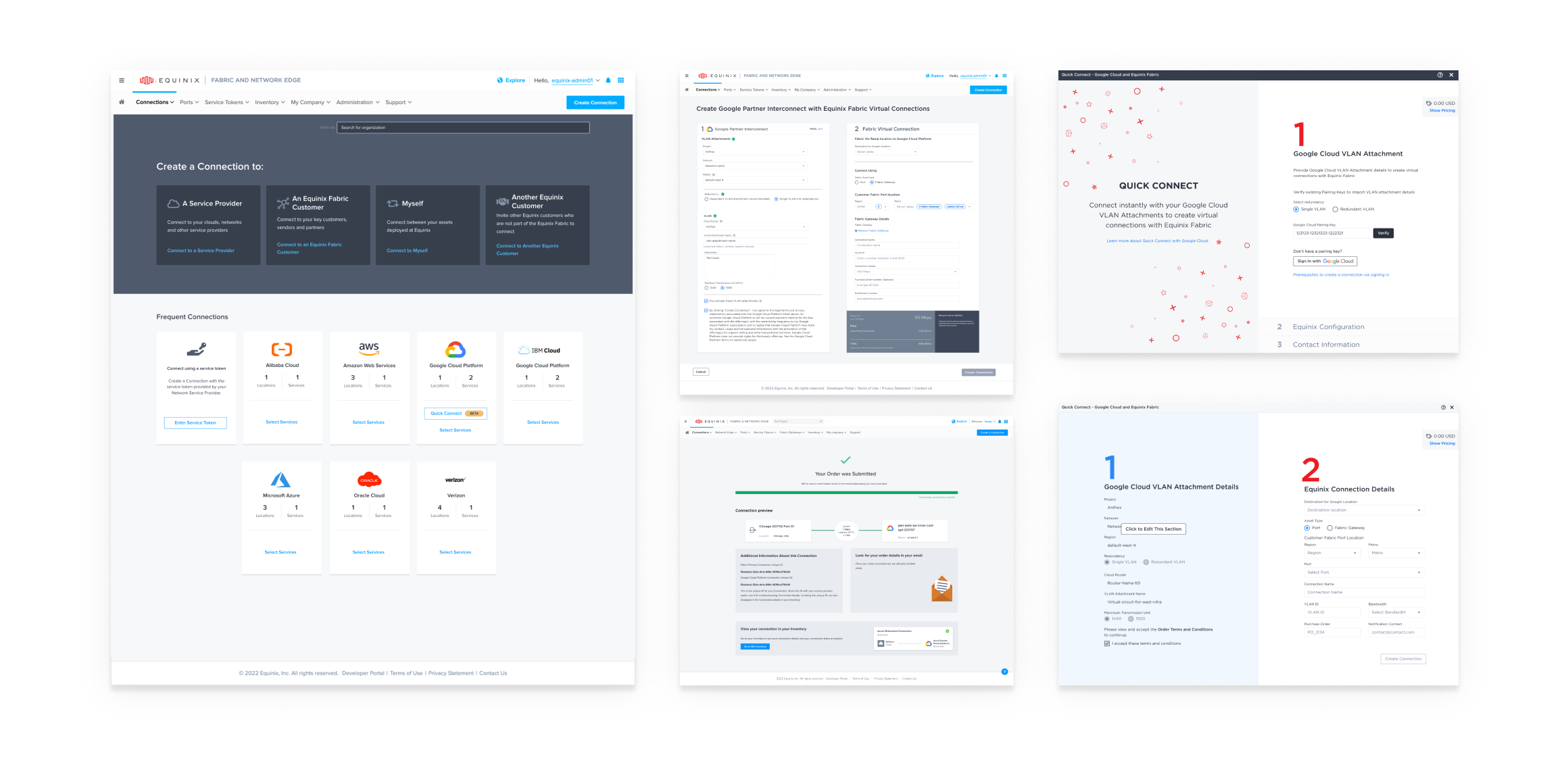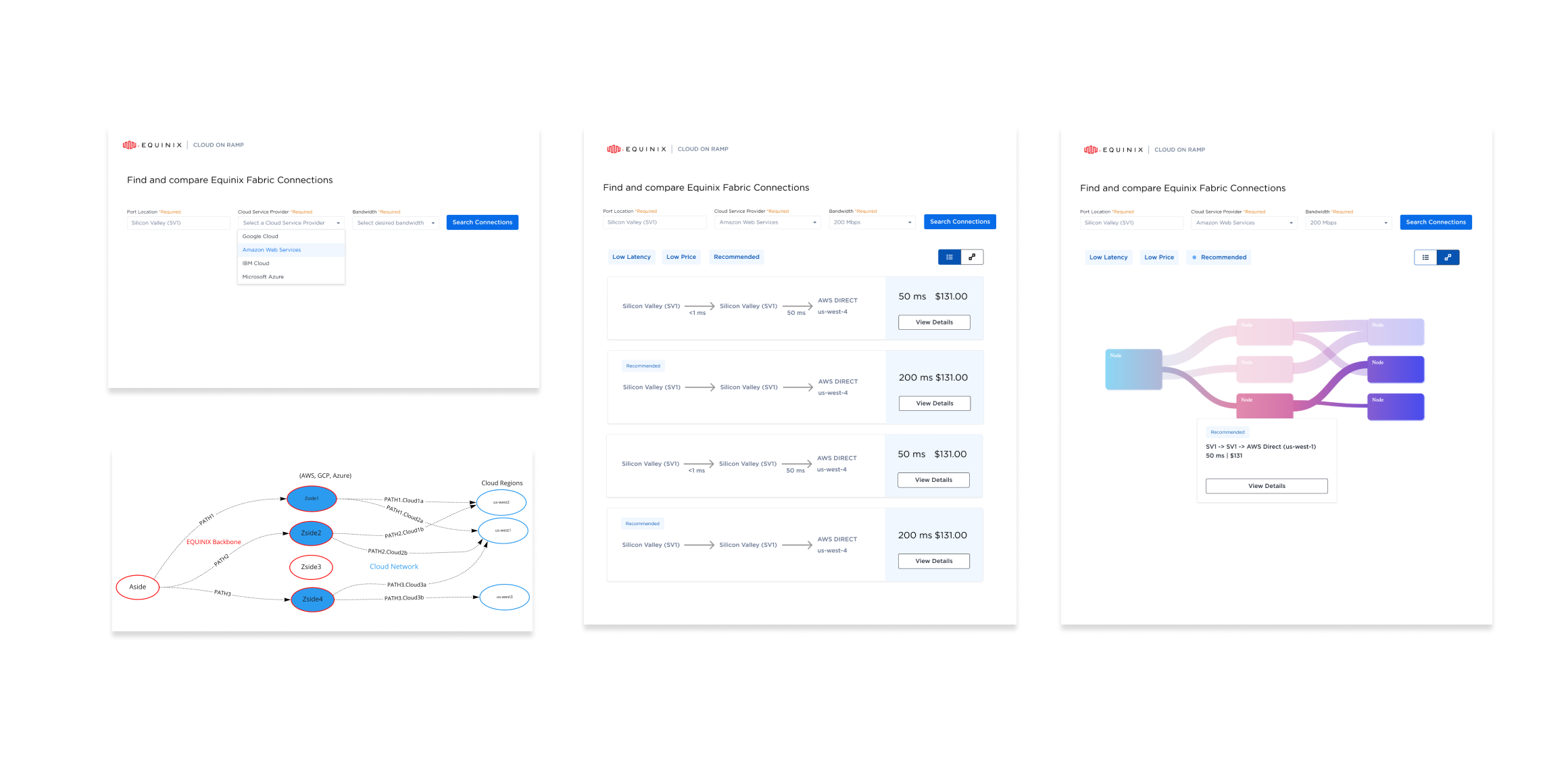
Project Overview
CloudOnRamp with Equinix (CORE) is a latency based connection route discovery service that helps cloud solution architects to search and explore best latency routes to connect their IT infrastructure assets to Cloud service providers within minutes. Our Hackathon solution significantly reduces the route/connection planning process from weeks/months to just a few minutes providing customers a delightful and seamless experience.
My Contributions
• Led the conceptualization, ideation and end to end design solution process.
• Conducted User interviews and gathered pain points around connection planning process.
• Designed Low fidelity wireframes and High Fidelity interactive mockups with variations based on MVP features and API limitations.
• Provided latency route dataviz D3.js coded prototype to Front end Engineer and helped with UI Component customization.
• Directed the storytelling and pitching with video and audio editing expertise.
• Collaborared, facilited and negotiated on features with engineering for MVP scope based on time constraints.
Quick Facts
My Role:
UX Designer
I led the entire design direction including interaction design and story telling pitching. Ideated, designed and delivered high fidelity interactive mockups as well as provided coded prototype for SVG loading Animation and D3.js data vizualizations.
Surbhit Bhatngar | Sr. Software Engineer
Srividhya Sitaraman | Sr. Software Engineer
Jaya Sharma | Sr. Program Manager
Time:
August 2021
Stack:
HTML, LESS, Ant Design, ReactJS, JavaScript, Microfrontend architecture, D3.js, SVG Animation, Design System
Tools:
Figma, Miro, MS Powerpoint
Connection creation process gets even more complicated when desired location, bandwidth and desired cloud service providers as requirements thrown in the mix. This entire process can lead to confusion and frustration for both CSA and customers and if not done right, a few milliseconds of latency difference can result in millions of business loss.
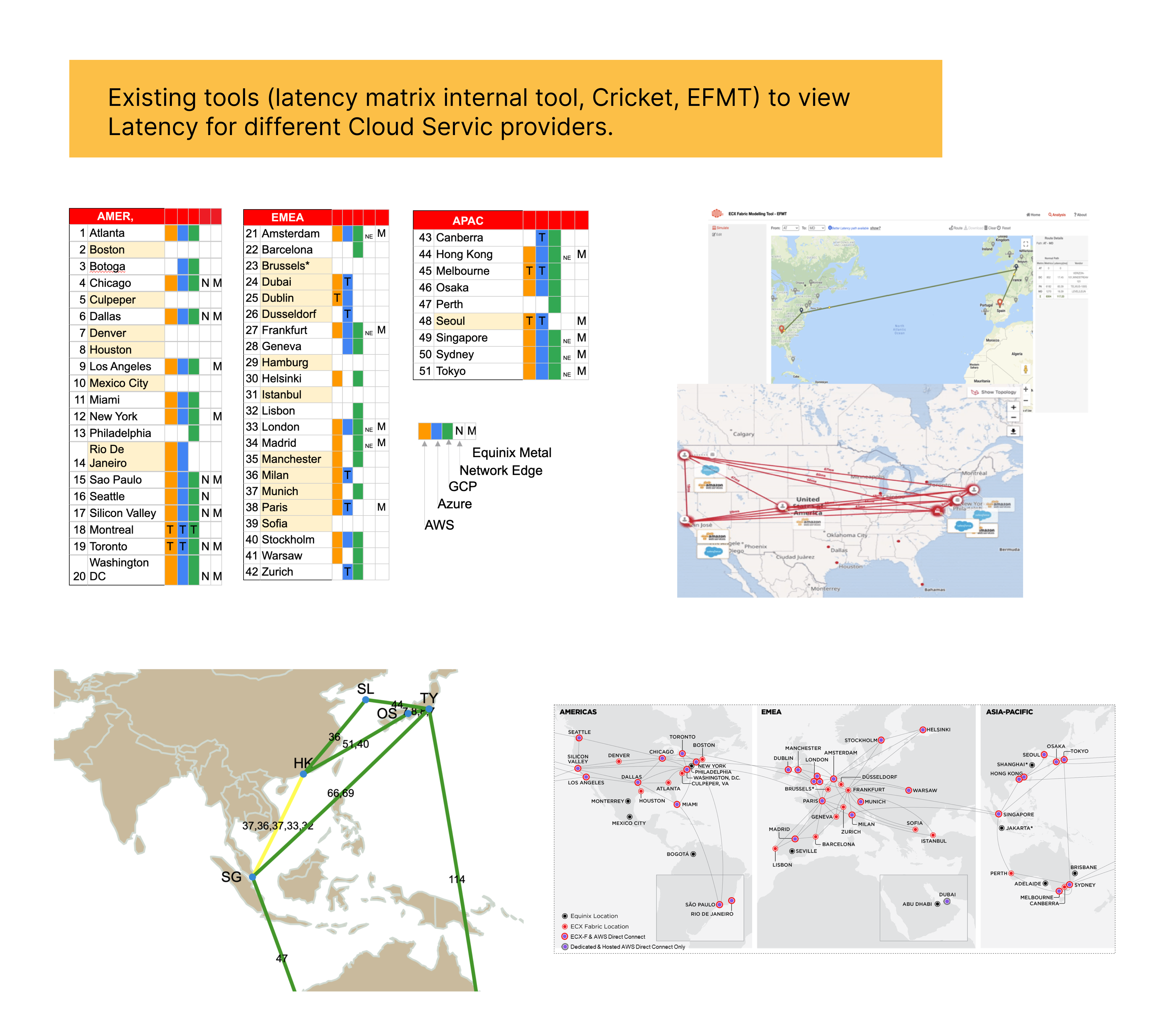
2. View Price estimates and the latency from location to location for each result.
3. Detail view for the selected latency route.
4. View latency Routes in a dataviz, a different result view.
5. Sorting latency results based on bandwidth, best latency and price.
6. Export desired latency route pricing estimate.

1. Interview with Cloud Solution Architect and Customer
2. Scope definition and feasability check of the project
3. Brainstorming and Ideation
4. Initial Lo-fi Wireframes
5. API capability check: Equinix Fabric API + Open source CSP data created custom API
6. Hign fidelity Mockups Creation & Validation with Users.
7. Scope addon to add more weight to project (Create connection based on desired result)

Interview with Cloud Solution Architect key findings:
1. Various tools required to make the decision
2. Learnt mental modal of approaching the latency solution (“where” to “who” with “bandwidth”)
Interview with customer:
1. How long it takes to create the connection
2. Communication modes differences
3. Requirements for sharing the price estimates (Port types, redundancy)
Possible features scoping that solves the painpoints
1. Ease of capturing user inputs (bandwidth, location, cloud service providers) scope limited to America Continent and Amazon and Google Cloud Service providers
2. API feasibility - finding available APIs (Fabric API + CSP API) to get latency, pricing , validating their data structure and access and restructure data.
3. Ease of viewing and filtering (bandwidth, pricing, recommended) the latency search results
4. View details about the selected latency route.
5. Ease of exporting the data based on port pricing model and location as required attributes.
After gathering insights from the user interviews and API capabilities I went to brainstorming and ideation mode. Things I kept in mind while drawing solutions and looking at inspiring ideas:
1. Learn the matrix of current solution tools. (need screenshots)
2. Similarity and Alignment /inspiration with the flight discovery.
3. View for map view or data viz to show the latency between path to path.
4. Designstorm with map views, location matrix and path finder.
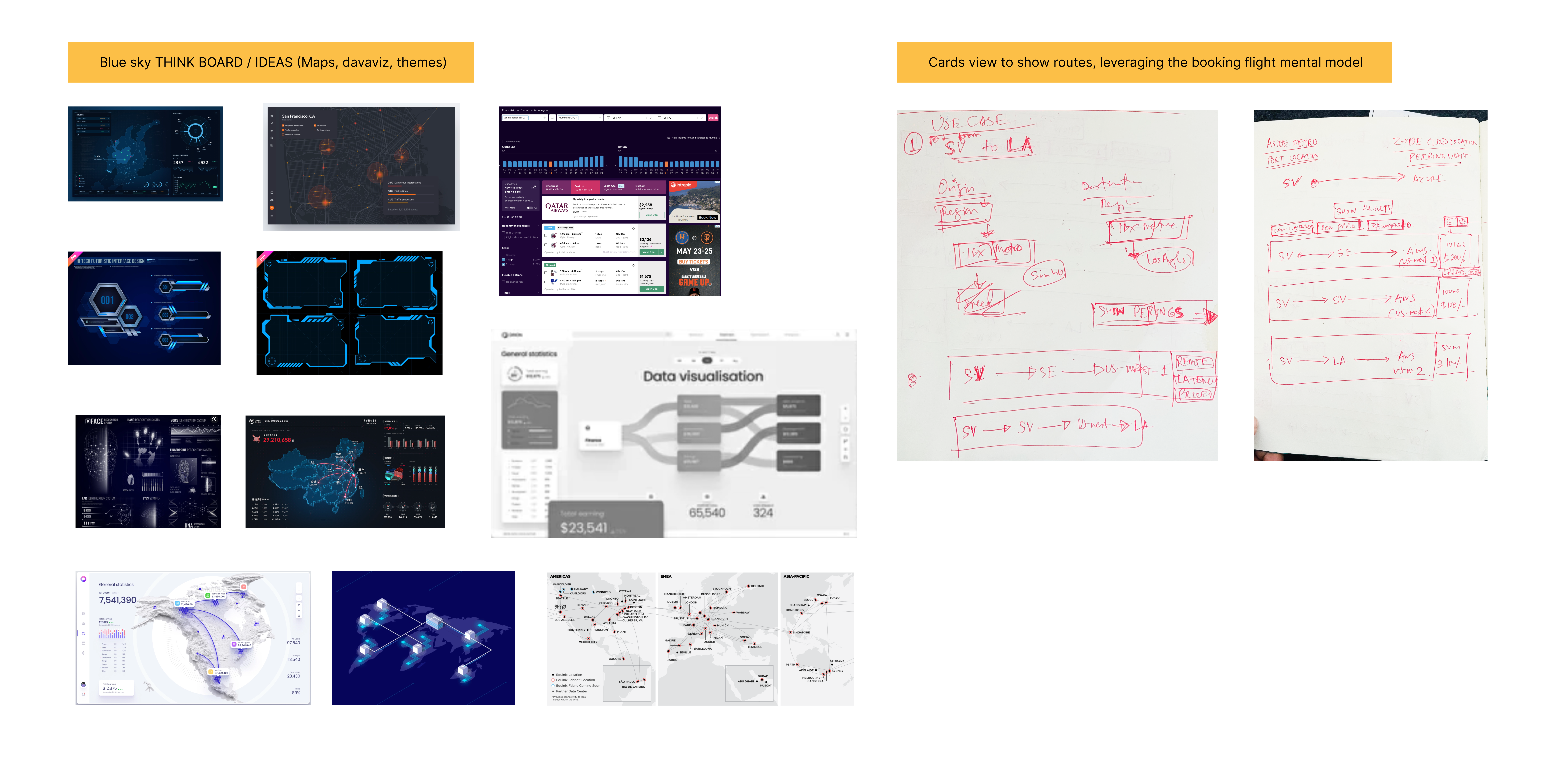
Here are a the Lo-fi wireframes I put together based on painpoints and scope in mind, few things to notice here:
1. Learn the matrix of current solution tools. (need screenshots)
2. Similarity and Alignment /inspiration with the flight discovery.
3. View for map view or data viz to show the latency between path to path.
4. Designstorm with map views, location matrix and path finder.
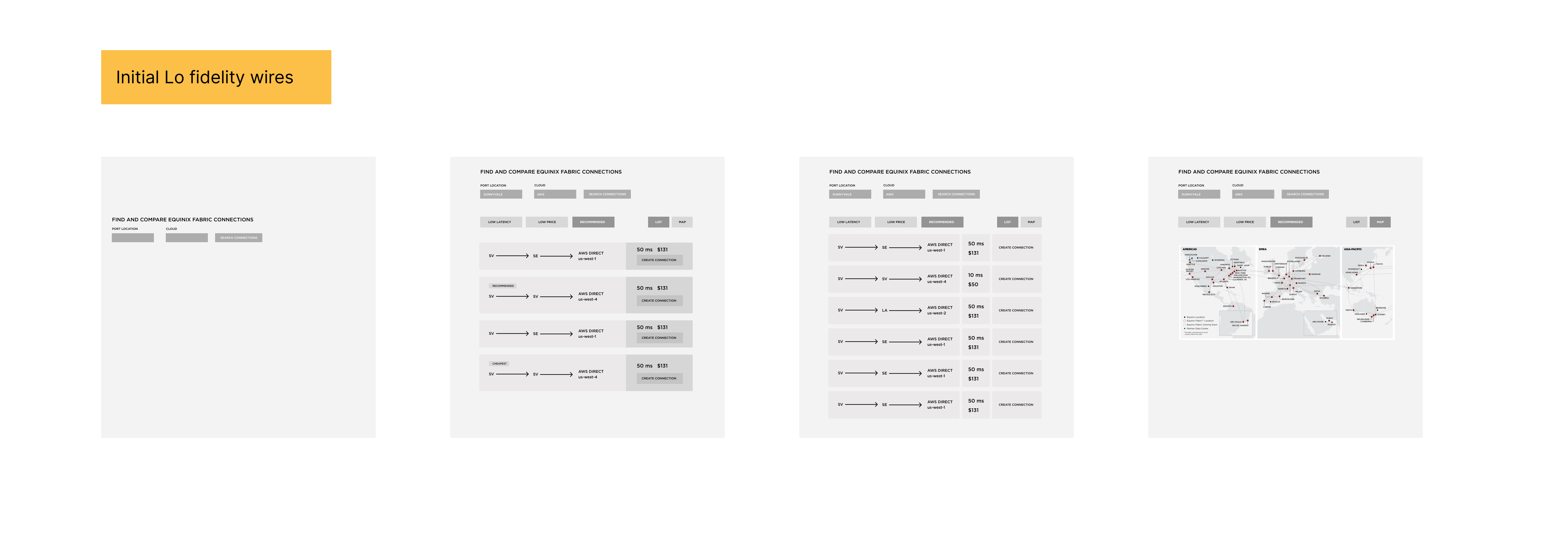
Our talented backend Engineer Surbhit shared his ideas and feasibility with rest of the team, this was crucial step where I got to gauge all the available datasets we had this was going to drive the scope of the project - Key points from the API archicture discussion:
1. Graphana API for cloud latency data.
2. Thousand Eye, Augtera, Megaport for live multicloud data.
3. Port pricing was determined by port package type * bandwidth + Remote connection price.
4. Bandwidth scope was picked between 50MB - 10 Gbps based on API capabilities
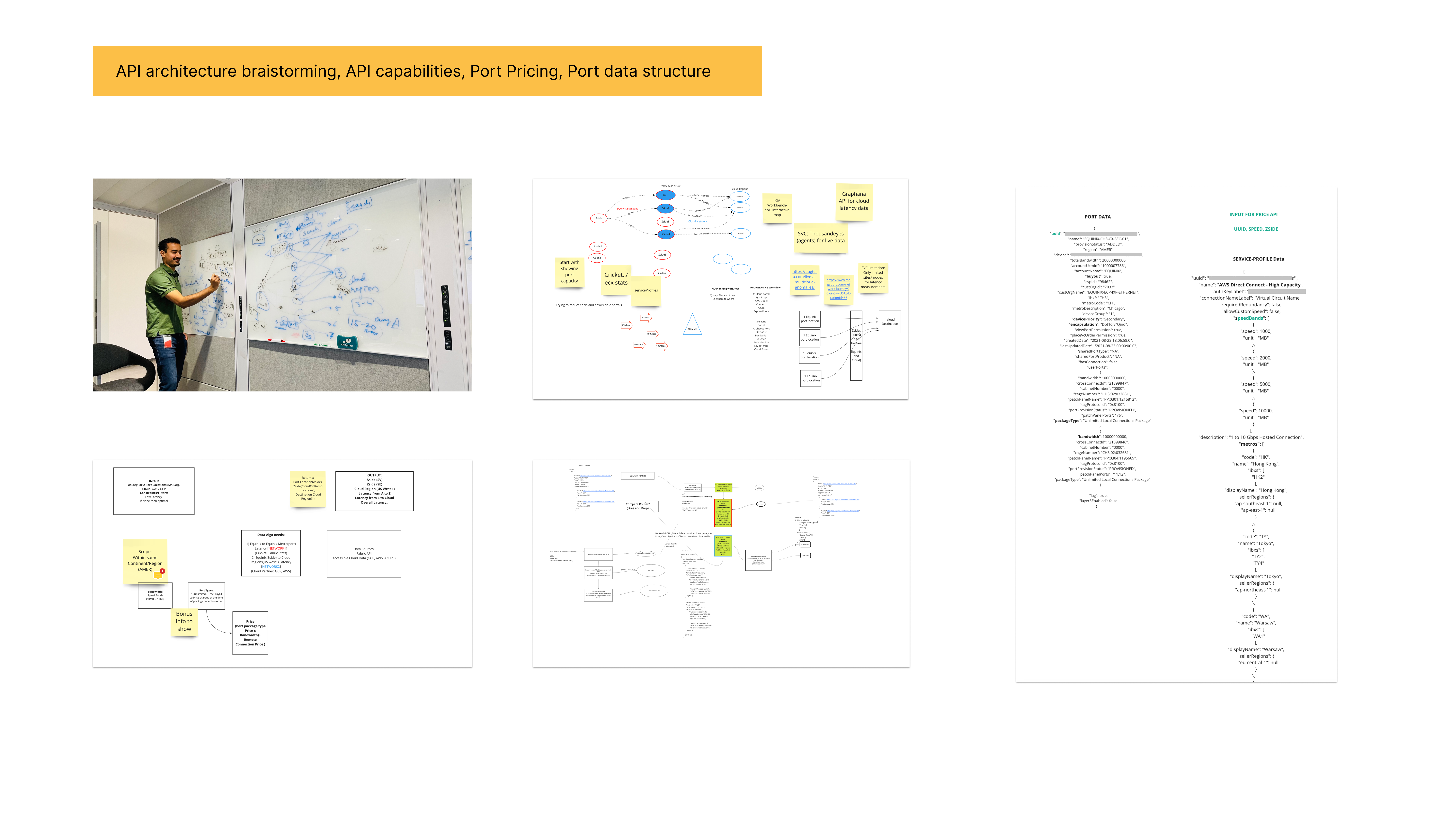
Things I kept in mind as I was updating LoFi to HiFi mockups - 1. Learn the matrix of current solution tools. (need screenshots)
2. Similarity and Alignment /inspiration with the flight discovery.
3. View for map view or data viz to show the latency between path to path.
4. Designstorm with map views, location matrix and path finder.
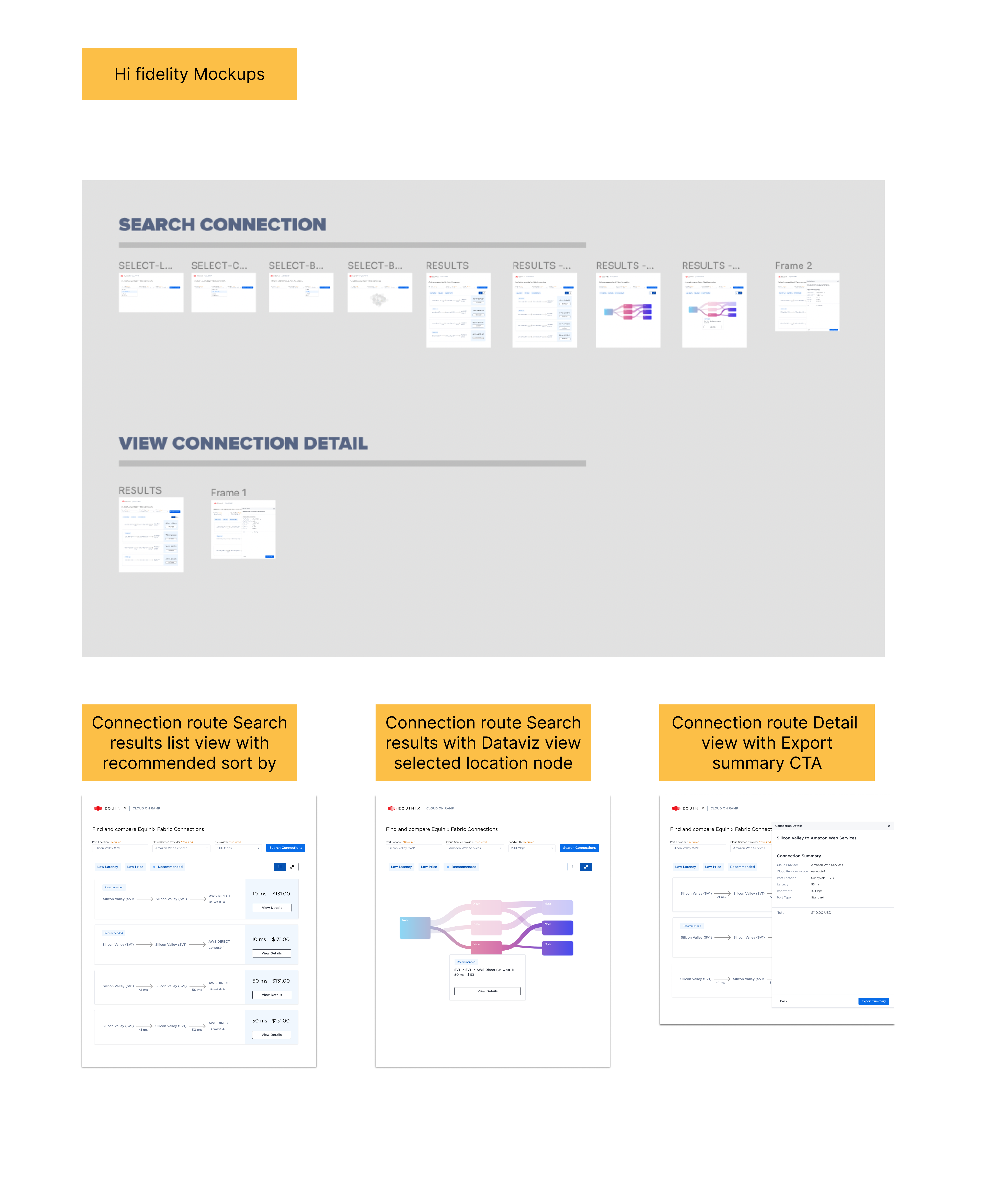
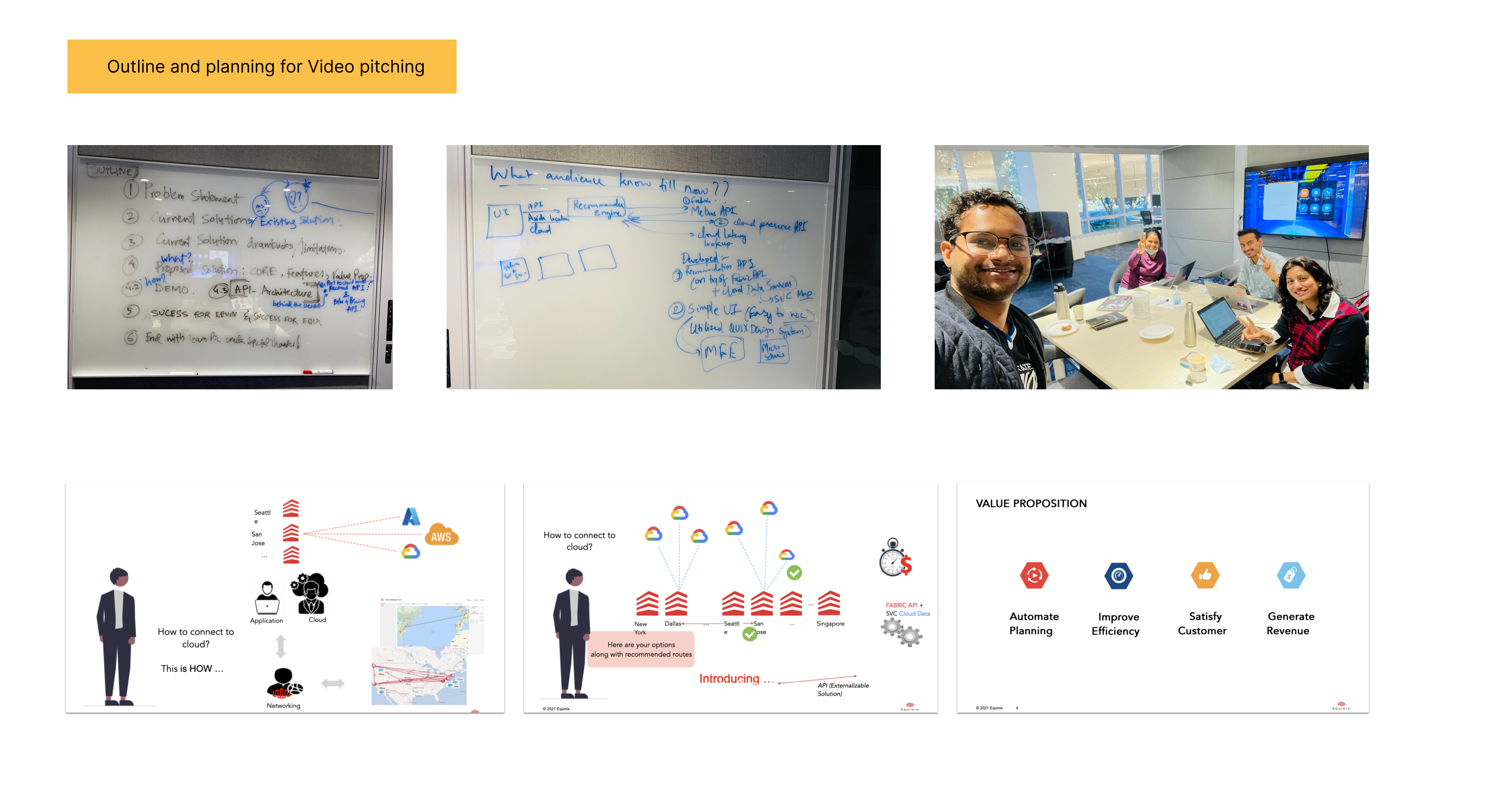
When the results arrived we were shoked to see that we not only recieved the top judges awards but also got the customer’s top choice award, this has never happened in Equinix Hackathon History when one team took both of them. We were AMAZED! and couldn’t believe ourselves. Overall that resulted in an amazing experience. We each took a whooping $1500 of Amazon Gift card as the winner of both customer choice and Judges choice award. Later on our Hackathon success story was also featured in Equinix newsletter.
